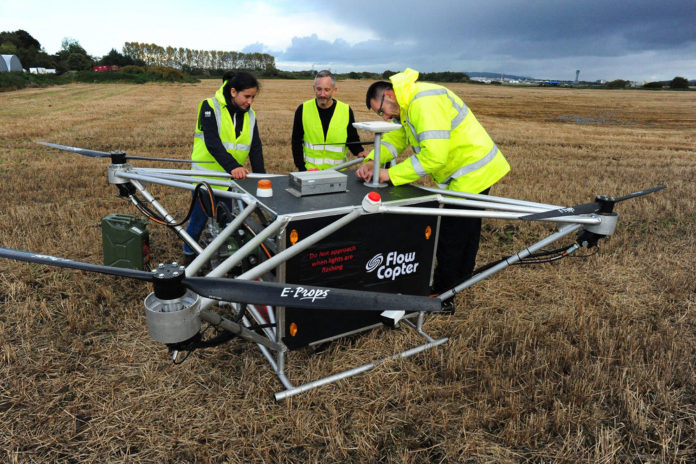Drones seem ideal for logistics and inspection of offshore assets like wind turbines and drilling platforms. But electric drones don’t have enough range to get 100’s of km offshore, so they need a support vessel and frequent turnarounds at sea. Delicate electric motors can’t tolerate the tough environment.
Edinburgh’s Flowcopter is developing long-range heavy-lift drones to help helicopter operators optimize freight, surveying, and search & rescue operations. The heavy-lift drones will run aviation-certified combustion engines that will drive digital displacement pumps – designed for harsh environments – providing control bandwidth to fly.
With their help, it is possible to distribute and regulate the hydraulic flow between a number of different outputs, instantly responding to digital control commands, which is very important for balancing a flying UAV. Hydraulic motors are totally sealed and made for extreme offshore environments. Each of them will deliver up to 96 kW (129 hp) of power with a weight of 5.5 kg and a price of less than $1,000.
The company says the weight of the hydraulic motors, the Digital Displacement Pump, the gas engine, and its fuel tanks might be significant, but when compared to the weight of lithium batteries and the limited range of electric drones, its hydraulic drone is a promising design. Flowcopter is capable of flying for more than 6 hours, up to 900 km (560 miles). After a few minutes of refueling, it can continue its flight. Shorter flights could facilitate payloads up to 150 kg, making the drone a more capable short-range autonomous delivery vehicle.
Flowcopter has developed a raw-looking prototype based on a welded metal frame and has been performing some tethered flight testing. In the video shown above, the prototype seems to take off the ground regardless of its look, and as the world’s first hydraulic hybrid multicopter, this is considered an impressive achievement.
